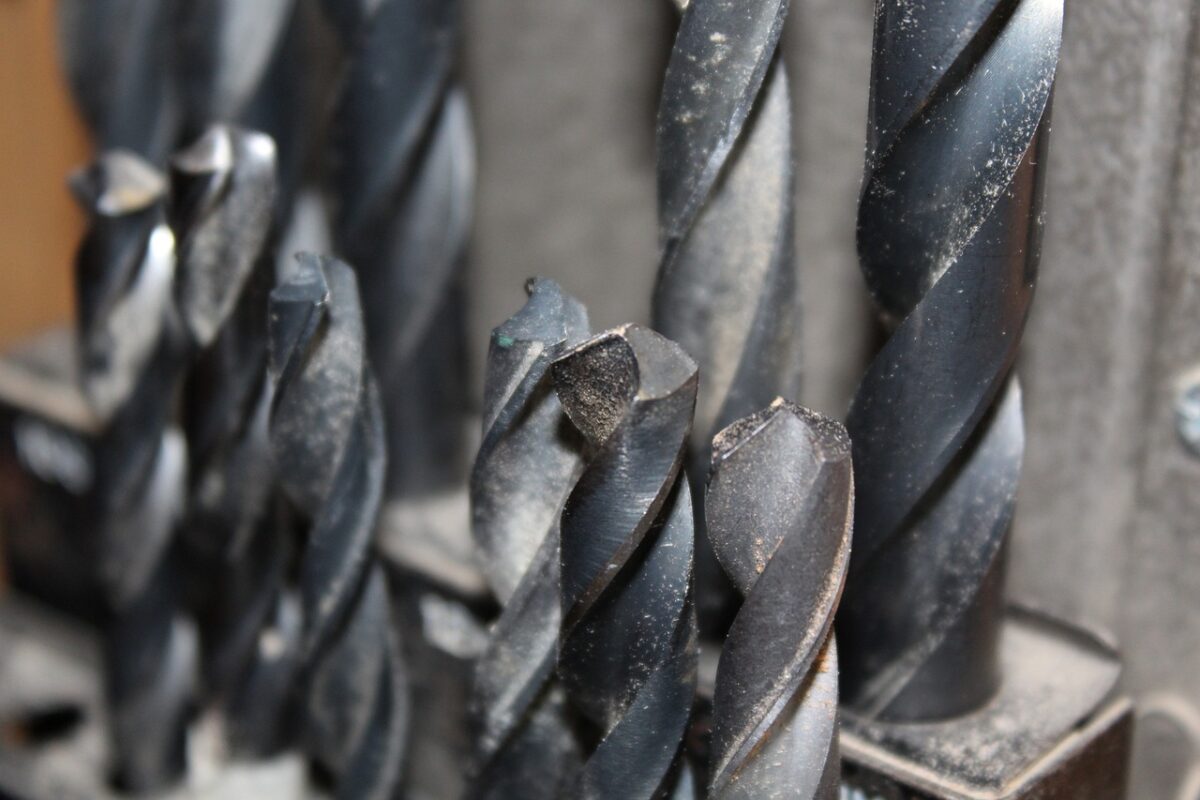Wandering is a common problem when you are drilling holes. It can slow down your progress and even ruin your whole work. That’s why you should learn how to keep the drill bit from wandering to keep your project progress going smoothly.
Contents
How to Keep the Drill Bit From Wandering
In order to keep the drill bit from wandering, you can put the point of a center punch or nail set on the spot you want the hole. Proceed to tap the center punch or nail set with a hammer so you can make a small dent in the metal.
This is how most people often keep the bit from wandering. However, there are other ways that you can keep the bit from wandering. We’ll explore each and every one of them, so you have a wider set of options. Here are some methods for keeping the bit from wandering:

1. Create a Dent With a Center Punch
This is the most common thing that most people do to prevent the bit from wandering. We’ve already mentioned this before and would just state it again and the reason why it’s done.
To keep your drill from wandering, you can put a center punch equivalent to the surface you’re going to drill. This is used to make a dent that your drill can be placed into, and it will stop wandering. The dent creates a hollow spot which keeps your bit in place on the spot you’re planning to drill into.
Be careful, as some surfaces are not suitable for making a dent. Wood is usually safe to make a dent with. If you’re an amateur just starting, you might have to.
2. Drill a Pilot Hole
Dents can be hard to make and won’t turn out the way you want them to. That’s why other people drill a pilot hole instead of making a dent. A pilot hole is just a cleaner version of a dent and requires pre-drilling using a smaller bit than the main bit you plan to drill with.
Drilling a pilot hole is also better for smoother surfaces that are harder to dent. To drill a pilot hole, you have to use a bit and drill a hole in the area you want to drill. The pilot bit you use should be smaller than the actual bit you’re going to use to drill the hole.
The tiny bit allows a bit of clearance when you are off track with your pilot hole. It prevents any major changes or redoing of the whole project.
3. Change the Bit or Drill
Sometimes, the problem lies with the bit or drill you’re using. It may not be compatible with the surface you drill, it may have the wrong configuration and settings, or it has old or worn-out components. For
If making a dent or pilot hole is not effective, you should assess your bit and drill if they need replacing. If you’re gonna get a new one, get high-quality bits and drill since they tend to wander less.
Other Ways to Prevent Bit From Wandering
There are other ways to prevent wandering without compromising the surface or getting better equipment. Here are some ways you can prevent the bit from wandering.
Use a stable drill. This is usually shorter or more rigid so your drill is less likely to wander.
Use counter rotation

Strategies You Can Use to Stop Wandering
There are some strategies you can use to stop wandering. For woodworking, you can use the Forstner bit or the Brad-Point to stop wandering. These bits have a very small point that prevents wandering. It also has a sharp wing tip that keeps the drill stable and cut in the right direction.
For machine tool works, use the center drill. It is used to start a hole mainly because it is stable and does not wander. However, the center drill can’t prevent wandering once the hole is started. Hence you need great accuracy if you want to.
What Are Non-wandering Bits?
This is what most amateurs would ask themselves when they found out their bits are always wandering. Wandering can be a frustrating experience as you drill and it doesn’t turn out right. Unfortunately, there are no non-wandering bits and it’s all about your drilling.
You should take a step back and assess what causes your drill bit to wander. It may be related to your drill, bits, methods, configuration, and even the surface you’re drilling.
What Are Starter Bits?
Starter bits are generally bits that you use to drill the pilot hole. These bits are often very short and very stiff for better stability. Keep in mind that all drill holes wander a bit, especially on wood so expect to see your hole a bit triangular.
Starter bits are also called spotting drills or centering bits and can be easily found in hardware shops. You can also ask locally and see if people know where to get them.
How to Drill Without Damage
You may worry about creating a dent or using a pilot hole because it can potentially damage your drill or the surface you’re drilling on. To avoid such potential damages, here’s what you can do:
Use the Correct Bit
Make sure that the bit you’re using is compatible with your work. Some bits are versatile in that they can be used for wood, metal, and plastic. There are certain sizes and types of drills for every surface or drilling. An incompatible size is also the reason why your bit is falling out, which can cause damage.
Back-up the Cut
Whenever you drill, some fibers on the back of the workpiece can tear out. Hence, you should back up the cut and clean out the drill and the hole. This prevents damage and makes the work much more efficient and clean.

Related Questions
How Do You Keep a Drill Bit Straight?
Set the drill bit into the disc’s hole. Position the drill until the bit is in a straight line with its reflection. Make sure to hold it steady while drilling and that’s how you keep your bit straight.
How Do You Hold a Drill Bit in Place?
The drill bit is held in place by a chuck. Chuck’s main purpose is to hold the drill or any other cutting instrument. Drill chucks can come in different variations like keyed, keyless, or hybrid systems. There are also ways how you can stop the drill bit from slipping in the chuck.
Should Wood Be Drilled Fast or Slow?
It depends on the diameter of the bit and the material drilled. A common rule of thumb for this is the larger the diameter, the slower you should drill. You can also check the recommended drill speed for every bit size.
Conclusion
Keeping your drill bit from wandering is easy. As long as you follow one of the methods I provided, your drilling experience should go smoothly without any hiccups. Remember to use a quality bit so you can pinpoint problems easier.
